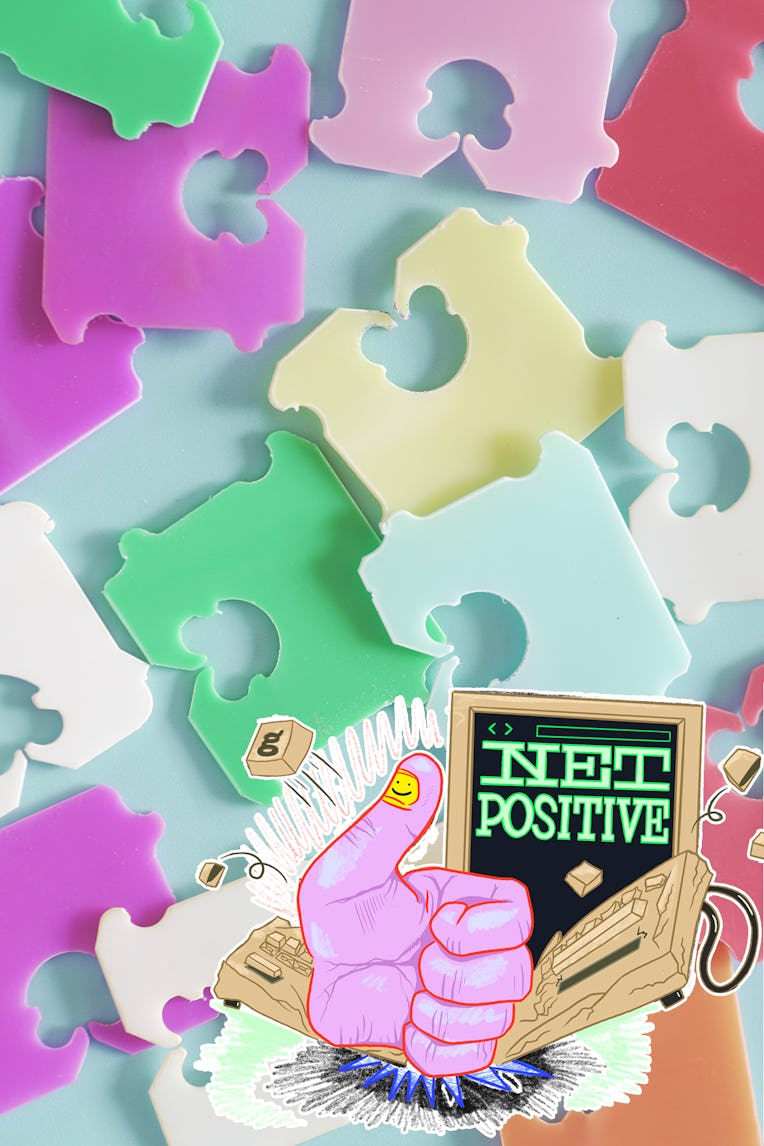Welcome to Net Positive, a series about nice places and things on the world wide web.
They live among us. Lurking in our pantries and refrigerators with their saber-toothed claws fastened around the bread, bagels, and hot dog bun packaging they were put on this earth to protect and serve. Porrectofrontus mechadeus. Alisarcina dolium. Palpatophora utiliformis. Occlupanids. Parasites. Bread clips.
“Occlupanid,” which is Latin for “bread closer” (occlu “to close,” pan “bread”), is the go-to scientific term for the little plastic bag clips that come with packaged breads. These creatures are the object of fascination for r/occlupanids, a subreddit of more than 1,200 users who classify these little plastic tabs as if they were a living species. Among the hundreds of posts on the subreddit are photos of specimens for identification, rare occlupanids caught in the wild, and pictures of bread clip collections carefully sorted and labeled for others to marvel over.
On r/occlupanids, community members are encouraged to post clear images of the specimen, an image of the “host” product that the clip was packaged on, and sometimes location. What does or does not qualify as an occlupanid can sometimes be up for debate, according to Diana Estabrook, one of the subreddit’s moderators.
“Identifying a specimen requires a keen eye,” says the 25-year-old occlupanologist, “and HORG’s easily accessible database is crucial for this. I personally recommend starting by identifying the family your specimen belongs to; from there you can browse all the known species and compare them to your specimen.”
HORG refers to the Holotypic Occlupanid Research Group, a website widely considered to be the source of canon to the occlupanologists passionate about their work. HORG was launched in 1994 by one John Daniel, a California resident whose interest in bread clips was inspired by an intense moment of reflection almost 30 years ago, as Daniel recounted to The Lifted Brow:
In 1994 I was staring straight at the wooden floor of a friend’s San Francisco apartment, and a lone occlupanid was wedged between the boards. I’d never really noticed how biomechanical they looked. Parasitic, even. Soon after I started noticing them everywhere, the various forms, colours, and arcane markings. They gripped firmly onto my mind and haven’t let go since.
Other occlupanid collectors can relate — bread clips grow on you.
Maril, a Québécoise Reddit user, started spending more and more time immersed in the world of occlupanids after stumbling upon the subreddit via a friend. She has come to find a tremendous amount of joy in documenting and classifying the bread clips she finds while shopping and in and around her neighborhood. “I like that they come in so many different varieties,” she says. “The possibilities of discovery are unlimited, and being a part of the research surrounding new creatures is fascinating!”
At this point it might be a good idea to address the elephant-sized occlupanid in the room. I know what you’re thinking: secret parasites disguised as innocuous grocery store products? Sounds like someone’s been smoking a few too many plastic tabs… in addition to classifying them, of course. Rest assured: Everyone on the subreddit shares a full and mutual understanding that everything to do with occlupanids is — for lack of a better word — make-believe.
“Bag closures are real, of course,” Estabrook answers when I ask her point blank if a parasitic species masquerading to the public as bread clips actually exists. “If you’re referring to whether or not the community truly believes they are living critters that feed and reproduce, of course not.”
But there is something appealing about participating in the collective self-aware suspension of disbelief that is occlupanid collecting. You might notice terminology such as “synthetic” and “abiotic” used in HORG’s literature, bringing cheeky attention to the contradiction of applying a meticulous system of classification to fake creatures. The website’s database rivals the taxonomical charts of real animals, with its methodology and massive catalog of occlupanids broken down by kingdom, phylum, class, order, genus, species, and external morphology. While it may be a farce, it’s also an homage to biology and how scientists may taxonomize actual living beings.
“There is a science for pretty much everything we know exists in our direct contact, and the fact that someone started collecting and identifying what seems a banal, disposable object [as] an actual critter is really adorable to me,” says Maril. “I think treating these little objects as though they were small living beings co-existing with us in our households is a brilliant idea.”
Estabrook’s favorite specimen these days is a super rare Rubilumina leviathan (“Red and luminous sea monster”), which she obtained 15 years ago. Maril, meanwhile, is most excited about a new species of long-forgotten translucent amphibious Tridentids that was recently shared by HORG on Twitter.
As for me? I tried to keep my work life and personal interests separate until I came across an orange beauty clinging to my packaged bagels. Palpatophora utiliformis grandis. I took a picture and posted it on Reddit — and in that moment, I understood how something so previously lifeless could come alive before your very eyes.
Correction: This piece has been updated to more accurately reflect information about Estabrook’s Rubilumina leviathan.
Jeremy Glass is a freelance writer and content producer for Drizly living in spooky midcoast Maine with his wife, daughter, and dog.
